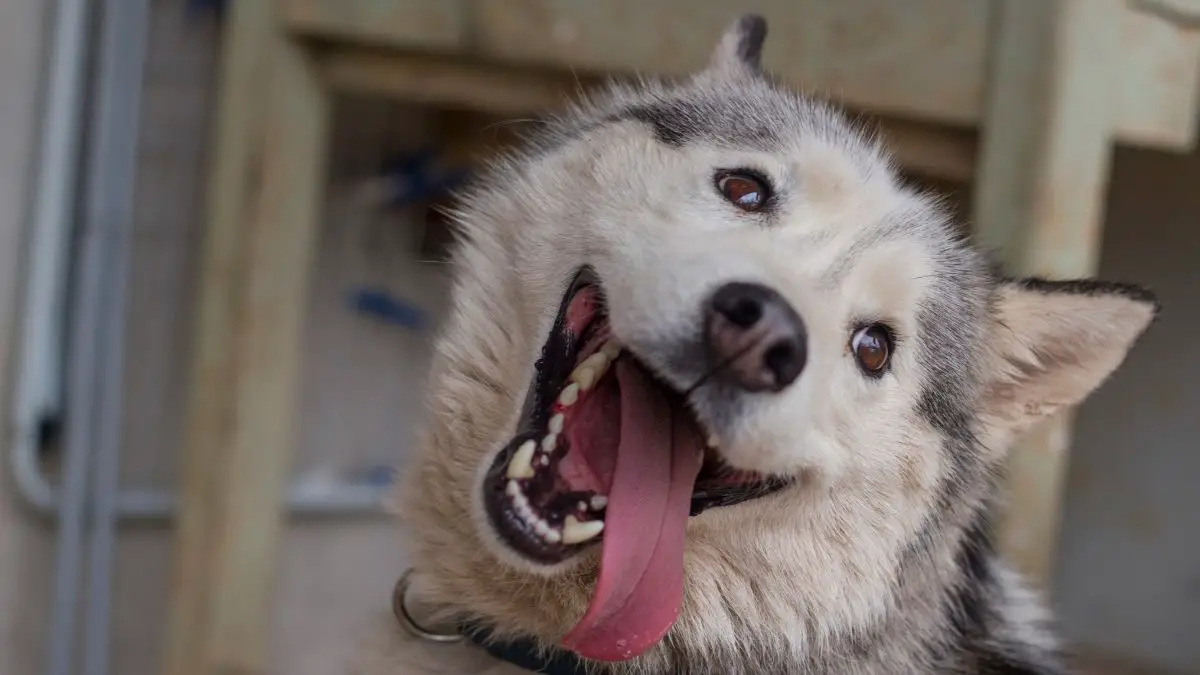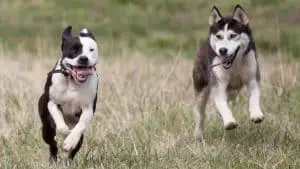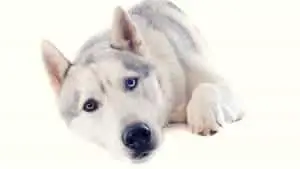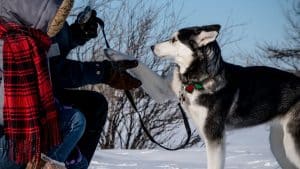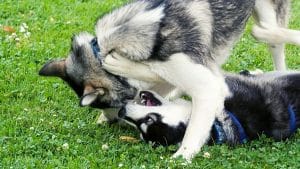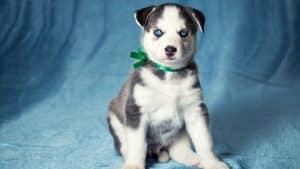Husky Body Language: 8 Things You Need To Know
Are you on the lookout for a gentle, intelligent dog with a high degree of endurance? Siberian Huskies fit this description perfectly, as they are known to be some of the ideal service dogs. If you already own one or plan to get a Husky as your pet, here are some things on Husky body language that will interest you.
Although they are an outgoing breed, we might often overlook some of the common behavioral patterns they exhibit. Like us, Huskies show a wide range of emotions, including happiness, aggression, alertness, fear, submission, reactiveness, and more.
Read on to know in detail about Husky body language and more.
Table of Contents
Common Traits Of Huskies
Huskies belong to a class of hunting dogs. Initially, a Chukchi family raised Huskies. As a result, Huskies are known to be extremely sensitive towards children. Hence, they are comfortable in indoor settings, although they require vigorous exercise to maintain their disposition.
They have different fur colors, including red and white, dark grey and white, and light grey and white. They are a friendly and gentle breed of dogs. However, impulsiveness is another strong trait they possess.
Huskies howl more than they bark, a trait that probably arose due to their characteristic of hunting in packs. They are highly independent and should not be controlled heavily as a result. It might cause mental issues for them.
What Is Your Dog Trying To Convey?
Therefore, it is imperative to possess a basic knowledge about your pets’ temperament to establish intimate bonding with them.
Happiness
This is a common emotion that most dogs exhibit similarly. The signs that indicate the happiness of a dog are:
- Relaxed overall posture
- Wagging tail
- Tongue may be visible
- Barks are high pitched
- Eyes are soft
- They initiate playful movements
They act in a welcoming manner towards the beings around them. Moreover, they do not shy away from expressing their joy in any way.
Aggression
Dogs generally become aggressive when they sense danger in their surroundings. They will immediately prepare for an attack if required. It also includes protecting their owner and guarding them. The most evident signs that your dog is aggressive include:
- Tense and tight body posture
- Eyes are piercing and focused
- Ears will face forward
- Tail is erect
Apart from these attributes, pay attention to your dog’s hackles. The body hair situated on the spine of dogs is called hackles. This hair becomes erect when your dog becomes aggressive or tense.
Hackles arise when the body of the dog experiences an adrenaline rush and sends an involuntary movement. They will shift their body weight to the forelegs to brace for an attack if required. Hence, this sign is very telling of the tense mood of your dog.
Husky dogs exhibit their aggression vocally through different indications. They bark, snarl and growl heavily. Deep, menacing barks that arise from their chest are indicative of their aggression. In this scenario, their barks showcase an apparent difference from happy barks.
Alertness
When the dog is unsure of its surroundings and happenings, it prepares itself in defense. This is similar to the Husky body language of aggression. However, a few pronounced variations are present in alert dogs.
The Husky will try to make sense of the situation initially. Therefore, a concentrated and sharp gaze will be present in its eyes. After that, it will stand in an erect position with its eyes and tail unmoving. The dog also tends to close its mouth completely.
Some of the other signs to note in alert dogs include:
- A short lip
- Wrinkled muzzle
- Hackles in a raised position.
Fear
When a Husky is afraid of its environment, it will communicate its fear through the following signs:
- They try to make themselves look small in a shrunk position
- Tail hangs low; often tucked between legs
- Ears droop and are flat against the head
- May lick lips – may or may not bark
When the dog exhibits one or more of these tendencies, calming them down is of utmost importance. Ignoring these signals might cause your dog anxiety and lead them to become traumatized eventually.
The first step to calm your dog down is by reassuring them. A positive, comforting stimulus is a vital measure that you should undertake. For example, you can gently rub and pat your dog. This will show them that you are aware of their stress and are working to eliminate it.
Next, you can create distractions by engaging them in their favorite activity. This will improve your dog’s state of mind by associating a sense of peace and joy to divert them from fear.
Desensitizing your dog to the fear factor is the final and most crucial step. Furthermore, exposing your dog to the root cause of their fear will aid them in overcoming it completely.
Submission
When a Husky dog wishes to demonstrate that it does not mean any harm or threat, it exhibits submissive gestures. The different methods of indication include:
- Rolling over and showing belly
- They lay flat on the ground and even try to shrink their size
- The tail is positioned between legs or wags very gently
- Urination is also possible
All of these inclinations come under a broad category known as appeasement signals. When a dog showcases submissive signs, they let themselves become vulnerable and unguarded.
Nocturnality
Siberian Huskies are not a nocturnal dog breed. Hence, they require adequate sleep and a proper sleep routine. A healthy Husky requires a minimum of 12 hours of sleep per day. Huskies possess a fast rate of metabolism and therefore burn a lot of energy. This will cause them to sleep soundly.
If your Husky finds it difficult to sleep peacefully, they are likely to stay irritable and disturbed. This will reflect in the Husky body language clearly. Moreover, there are also chances for the dog to suffer from anxiety and distress.
Reactiveness
Huskies are generally known to be moody and slightly dramatic at times. It is due to their inherent reactive and expressive nature. Huskies love to be vocal and communicate their requirements effectively.
When there are hindrances in these aspects, Huskies can become temperamental and dramatic. However, this is an exaggerated reaction and is funny most of the time. Their body language becomes goofy, and they might make weird sounds.
Nonetheless, it is essential to check their dramatic reactions as they may require proper training to overcome them. When the importance of good behavior is taught to them early on, they will refrain from creating unnecessary tantrums.
Separation Anxiety
Siberian Huskies experience immense separation anxiety as they require constant attention and affection. They should not be left alone for prolonged durations. Husky body language when left alone signifies anxiety and unhappiness in a pronounced way.
The types of behavior they will exhibit under these circumstances include:
- Aggressively destroying furniture, doors, and windows
- They become restless and display anxiety
- Whining and whimpering
Hence, you should prepare beforehand if you wish to leave your husky alone at your home. Toys, crates, and visual entertainment are some of the handy options that can keep your husky engaged. Hiring a dog-sitter is also a reliable solution.
Body Parts And Associated Demeanor
Apart from all the different traits mentioned until now, keeping a check on the body parts of your husky can also provide substantial insight. Huskies are an expressive and outgoing-natured breed of dogs. Their body parts are indicative of their overall mood at a given point.
- Eyes: Your blue-eyed Siberian Husky can accurately convey its emotions. When its eyes are soft, it is happy and playful. If the eyes are penetrative, it is experiencing aggression.
- Ears: Huskies tend to position their ears forward when they are alert or sense something. When their ears droop down close to their head, it is indicative that they are afraid or sad.
- Mouth: Huskies tend to keep their mouth wide open when they are excited. They clench their mouth tightly when they are under stress or experience aggression.
- Tail: You can notice whether your dog is wagging its tail, letting it limp, or placing it in an erect position to gauge its mood.
- Body Weight Distribution: When Huskies prepare for an attack, they shift most of their weight to the front. This helps them to lunge forward quickly and land a solid assault.
Apart from these body gestures that Huskies demonstrate, they also display specific behavior at certain junctures.
Final Words
This guide provides a comprehensive interpretation of your dog’s behavior. You can refer to it to understand the different emotions they express.
Now understanding the needs and requirements of your dog will be a simplified and smooth process!

